Each land trust, landowner, and conservation easement is one-of-a-kind
From verdant, low-elevation spreads in Wyoming’s northeast corner to high, dry western basins, private lands across the state are diverse. Here, we survey a few recent conservation easements from all corners of the state that are just as varied as the lands they cover. Some protect working ranches and an agricultural way of life. Others focus on open spaces and public access. Still others protect wildlife migration corridors and raptor nesting sites. The potential purposes and outcomes of conservation easements can be as different as the landowners who opt into them.
Ryegrass Ranches
Wildlife habitat on 15 adjacent ranch properties
Green River Valley Land Trust
2,254 acres
Over a five-year period, 15 different landowners donated conservation easements on the Ryegrass Ranches to the Green River Valley Land Trust. These easements preserve working ranch operations as well as significant, high-quality wildlife habitat including wetlands and creek frontage home to elk, moose, mule deer, pronghorn antelope, waterfowl, and songbirds. Raptors—including bald eagles—also nest here. The conservation easement agreement stipulates all fencing must be wildlife-friendly, and allows for wildlife and fishery enhancements.
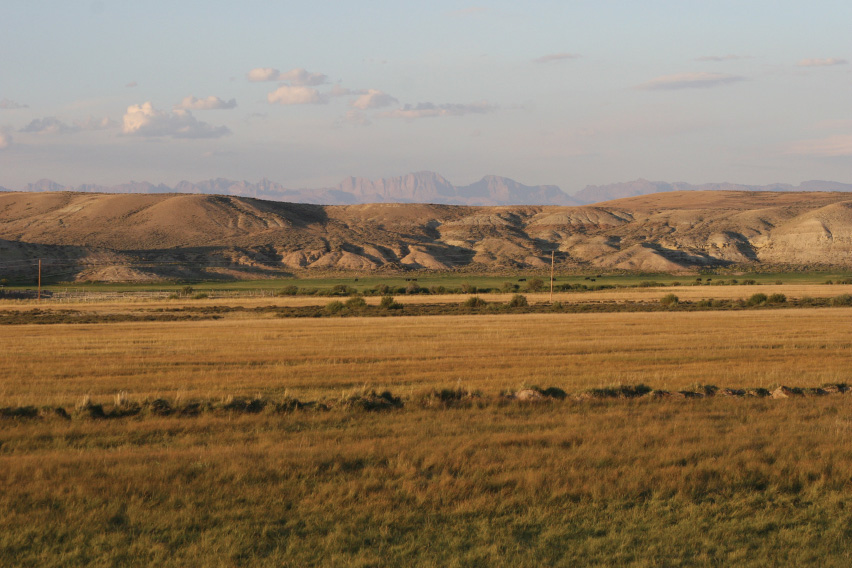
Double Bar E Ranch
Race to save a critical pronghorn migration corridor
Green River Valley Land Trust
873 acres
Up to 1,000 pronghorn antelope migrate through the Double Bar E Ranch each year, and 33 endangered, threatened, rare, or special concern species use the property. The historic cow-calf operation also participates in the annual Green River Drift—one of the nation’s longest running cattle drives. When the Green River Valley Land Trust had less than a year to raise $1.2 million to purchase a conservation easement here, The Nature Conservancy, Wyoming Wildlife and Natural Resources Trust Fund, the Rocky Mountain Elk Foundation, the Tom Thorne Sage Grouse Conservation Fund, plus numerous individuals, families, and foundations all contributed.
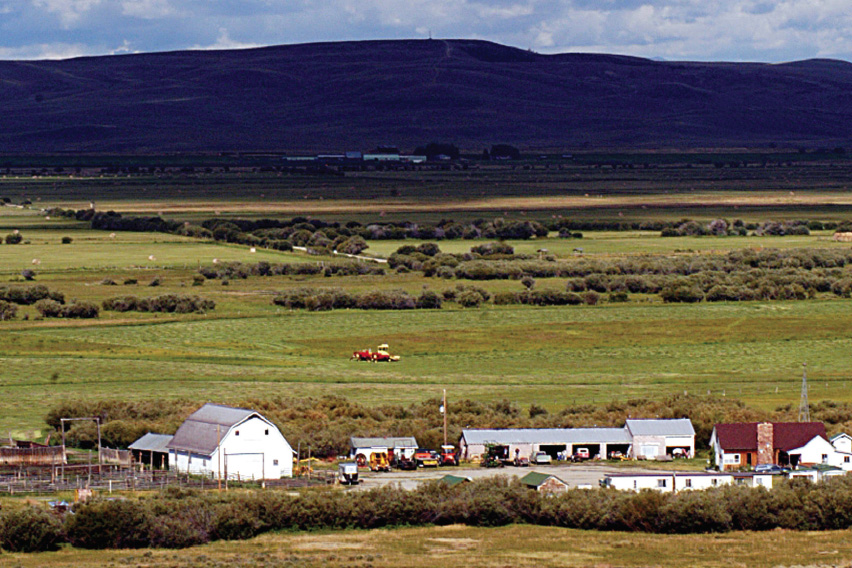
Soldier Ridge: Public hiking trail replaces development
Sheridan Community Land Trust
1,154 acres
When 18 home sites were slated for Soldier Ridge near Sheridan, the Sheridan Community Land Trust stepped in and community leaders took action. They worked with the developer to move four developable parcels off the ridgeline toward an existing road to protect views. Then a realty company donated one conservation easement, and the Sheridan Community Land Trust raised funds to purchase an adjacent one. Today, stunning views of the Bighorns treat hikers along the four-mile Soldier Ridge Trail. In addition to providing open space and public access, this project also links valuable wildlife habitat for pronghorn, deer, and elk in two valleys.

Munger Mountain: Linking elk to their calving area
Jackson Hole Land Trust
771 acres (236 new, 535 previous)
Elk that winter on a feedground south of Jackson cross the Lower Snake River Ranch to reach their calving grounds on Munger Mountain in the Bridger-Teton National Forest. They cross agricultural land, in a region vulnerable to housing development, that’s also important for black bears, mountain lions, mule deer, and bald eagles. Conservation began here in 1991. In 2014, a 236-acre conservation easement complemented the 535 acres already under protection. Funding for the 2014 project included a $3 million USDA Forest Legacy Program grant and $600,000 from the Wyoming Wildlife and Natural Resource Trust.
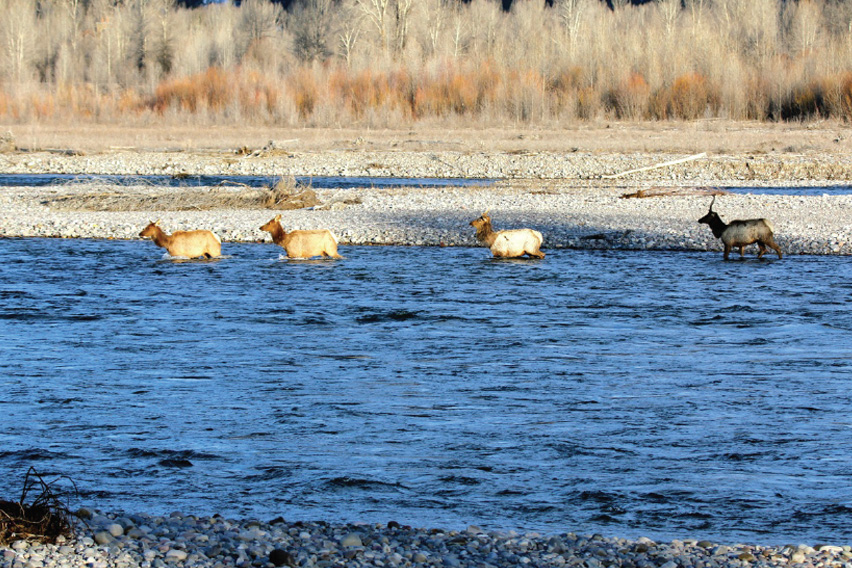
Spring Gulch: Still subdivision free
Jackson Hole Land Trust
1,791 acres
With sheltered meadows, sweeping views of the Tetons, and easy access to downtown Jackson, Spring Gulch could have easily turned into a subdivision. However, over the years, local ranching families and landowners donated a number of easements, including 247 acres at Jackson Land & Cattle Equestrian Center, 507 acres at Bar BC Meadow, 447 acres surrounding the Spring Creek Ranch and Amangani developments, and 211 acres at Mead Ranch. Conservation efforts in Spring Gulch are ongoing. In 2015, a 379-acre conservation easement on the Mead Ranch further protected wildlife, agriculture, and scenic values. A Jackson Hole Land Trust capital campaign and a loan from the Bank of Jackson Hole paid for the 2015 project.
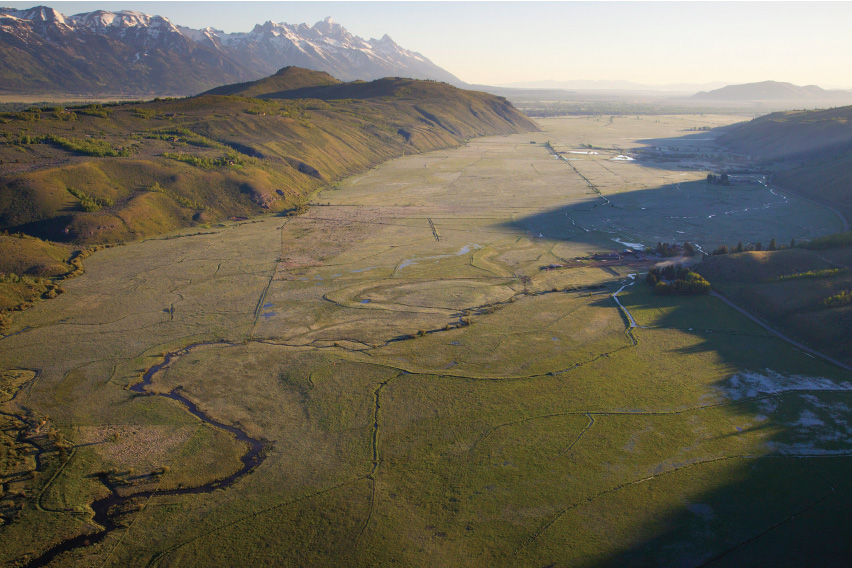
Bear Lodge Cattle Company: Ranching heritage near a national monument
Wyoming Stock Growers Agricultural Land Trust
4,921 acres
The hundreds of thousands of visitors who visit Devil’s Tower each year will see open spaces, wildlife, and working cowboys into the future, thanks to Bear Lodge Cattle Company and Ogden and Zannie Driskill. A nearly 5,000-acre conservation easement will keep these working agricultural lands in production within view of the monument. Furthermore, it will protect habitat for bald and golden eagles, osprey, peregrine and prairie falcons, herons, egrets, and other wildlife. Funding from the Natural Resources Conservation Service’s Farm and Ranchland Protection Program, the Wyoming Wildlife and Natural Resource Trust, and The Conservation Fund contributed to this easement.
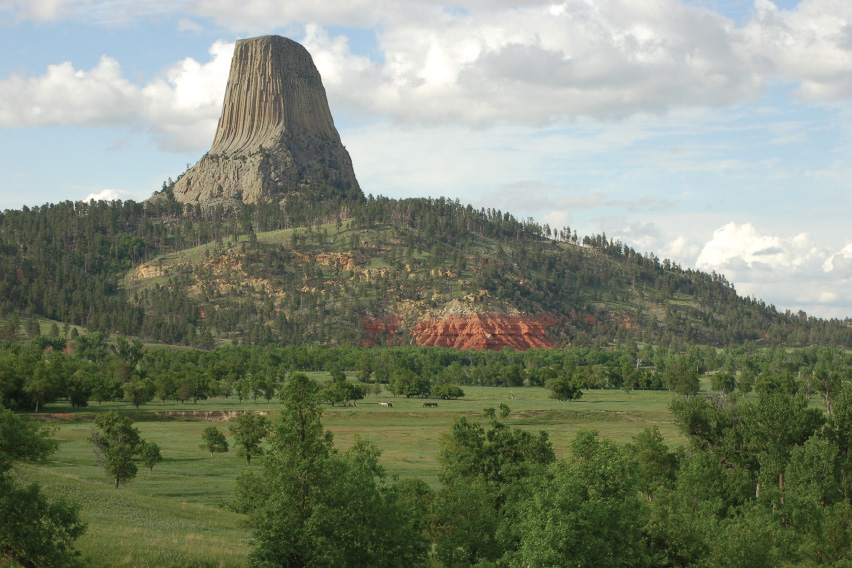
Buck Ranch: Saving sage grouse
Wyoming Stock Growers Agricultural Land Trust
2,050 acres
Buck Ranch—north of Kemmerer—was at high risk for subdivision and development thanks to excellent fishing on the Hams Fork River and lovely mountain views. While rancher Karen Buck Rennels sold the easement to keep the rangeland and hayfields in production, its key location is a boon for wildlife as well. The ranch hosts a sage grouse lek; moose, mule deer, and pronghorn habitat; and a wildlife corridor between Lake Viva Naughton and Kemmerer Reservoir. Funding came from the Natural Resources Conservation Service, Wyoming Wildlife and Natural Resource Trust, and the Wyoming Sage Grouse Campaign, a partnership between The Conservation Fund and the Knobloch Family Foundation
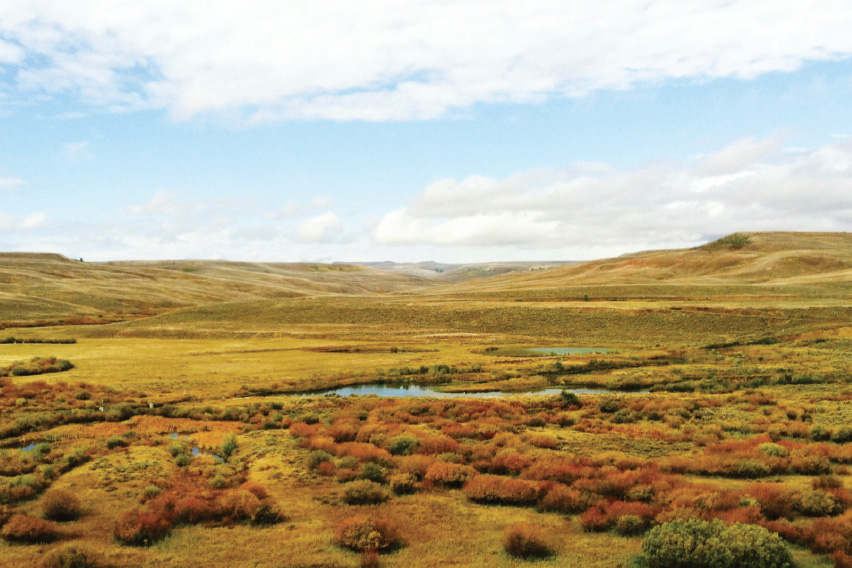
Weber Ranch: Eagle mitigation funds protect land
The Nature Conservancy
3,802 acres
Fourth-generation ranchers Matt and Sherry Weber’s land is surrounded by eagle nests—there are 69 within three miles of the property—as well as by oil and gas developments. Furthermore, the Chokecherry-Sierra Madre wind farm, slated to be the country’s largest, is planned nearby. After courts required two energy companies to contribute over $2 million to the National Fish and Wildlife Foundation to help protect golden eagles threatened by wind energy development in Wyoming, some of that money went to a conservation easement on the Weber Ranch. The easement prevents future electrical infrastructure, roads, housing, and wind development that could harm eagles. It also preserves vital winter range and a key migration area for mule deer, as well as habitat for sage-grouse, fish, and other wildlife. Additional funding came from the Wyoming Wildlife and Natural Resource Trust and The Conservation Fund
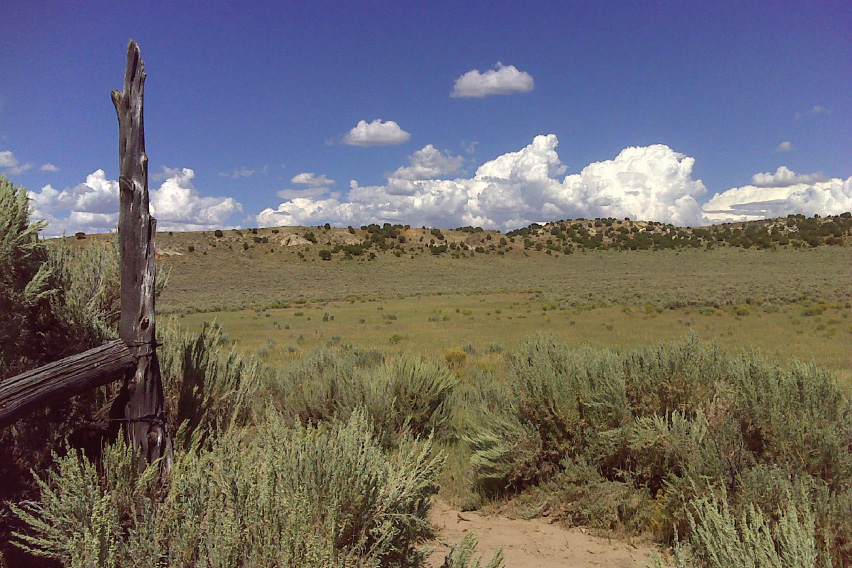
By Kristen Pope


